What is Duochrome Test?
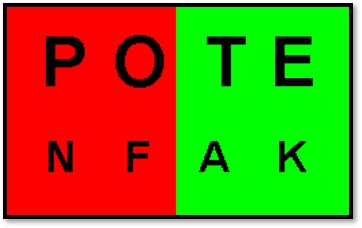
- Duochrome Test is the test that helps to get an indication about the rays are focusing on the retina instead to in front or behind the retina.
- During refraction, we should find the refractive power of the patient without being accommodation activated.
- To keep the accommodation at rest out rays need to focus on the retina but there is no way or no instrument that can show us how rays are focusing in relation to the retina.
- Duochrome test gives us clue about where the rays are focusing based patient response while patient is seeing Black letters or optotypes on Green and Red Background.
- Lets see how Duochrome Test works or Principle of Duochrome Test.
What is the Principle of Duochrome Test?
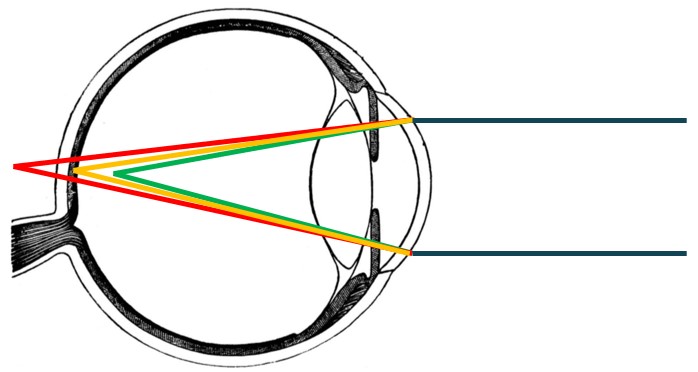
- This test is based on Chromatic aberration of the eyes.
- In Chromatic Aberration, rays with shorter wavelength focus in front of the retina and rays with larger wavelength focus behind the retina.
- We know that white light is a combination of 7 color that can be expressed with pneumonic VYBGYOR (Violet-Indigo-Blue-Green-Yellow-Orange-Red).
- In an Emmetropic Eye, Yellow rays focus on the retina, Green in front of the retina and Red focus behind the retina.
- Green and Red focus equally distance from the retina Green in front and Red Behind the Retina.
- The Distance between the focus point of Green and Red is constant.
In Myopic:
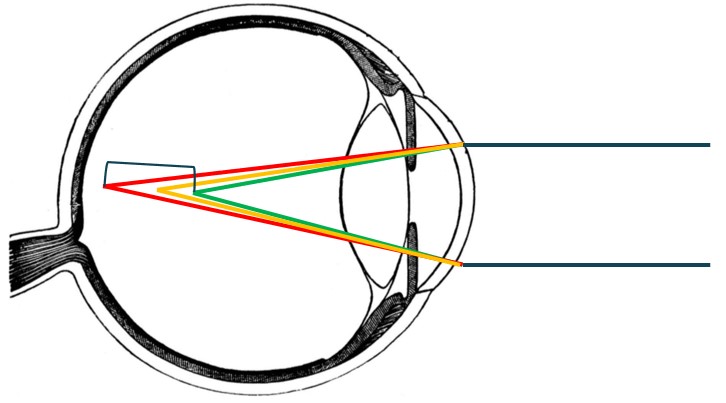
- Thus, when eyes converging power is more as in Myopia, these rays converge more and focus in front of the retina but the distance between the focus point of these rays are same.
- So, for a myopic Red will be closer to the retina and red will be clearer as compared to Green.
- This gives us an idea that eyes converging power is more or patient is myopic or rays focusing in front of the retina.
In Hyperopic:
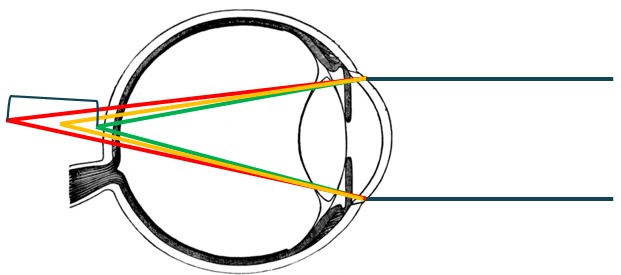
- When eyes converging power is less like in Hyperopia, all these rays converge less and focus behind the retina but the distance among these rays are same.
- So, for a hyperopic Green will be closer to the retina and Green will be clearer as compared to Red.
- This gives us an idea that eyes converging power is less or patient is Hyperopic or rays focusing behind the retina.
How does Duochrome Test help to balance the Accommodation?
- When Green & Red focus equally distance from the retina Green in front and Red behind the retina, our eyes accommodation become zero or at rest.
- As Green and Red are focusing equally distance from the retina thus Green and Red both will be equally cleared.
In Myopia:
- In myopia Red will focus closer to the retina due to increase converging power of our eyes.
- To make the Green & Red rays focus equally distance from the retina we can add MINUS lens to diverge the Green & Red rays.
- So in Myopic, Minus lens is added in -0.25D steps till Green & Red focus equally distance from the retina and Green & Red become equally clear.
In Hyperopia:
- In Hyperopia Green will focus closer to the retina due to decrease converging power of our eyes.
- To make the Green & Red rays focus equally distance from the retina we can add PLUS lens to converge the Green & Red rays.
- So in Hyperopic, Plus lens is added in +0.25D steps till Green & Red focus equally distance from the retina and Green & Red become equally clear.
Procedure of Duochrome Test:
Pre-requisites:
- Room Illumination: Dim light condition to increase chromatic aberration of eyes.
- Retinoscopic power (both spherical and cylinder power) should be given.
- Untested eye should be closed.
Procedure:
1. Initial Question:
- Ask the patient, “Are the letters in the red background darker/clearer or are the letters in the green background darker/clearer?”
2. Green Background Clearer:
- If the patient responds that the letters on the green background are clearer, add +0.25 diopters sphere (DS) steps until the letters on both the red and green backgrounds appear equally dark/clear, or until a reversal occurs.
3. Red Background Clearer:
- If the patient responds that the letters on the red background are clearer, add -0.25 DS steps until the letters on both the red and green backgrounds appear equally dark/clear, or until a reversal occurs.
4. Final Adjustment:
- The power required to make the letters on the red-green chart appear equally dark/clear is then added to the retinoscopic power.
Example of Duochrome Test Final Power Calculation:
Retinoscopic Power:
- The initial retinoscopic power is -2.0 DS.
Patient’s Response:
- The patient sees the letters on the green background clearer.
First Adjustment: Add +0.25 DS.
- The patient still sees the letters on the green background clearer.
Second Adjustment: Add another +0.25 DS (total of +0.50 DS).
- Now, the letters on both the red and green backgrounds appear equally clear.
Final Power Calculation in Duochrome Test:
- Retinoscopic Power: -2.0 DS
- Duochrome Adjustment: +0.50 DS
Final Prescription:
-2.0 DS + 0.50 DS = -1.50 DS as the spherical endpoint.
src=”https://pagead2.googlesyndication.com/pagead/js/adsbygoogle.js?client=ca-pub-5507525765785967″ crossorigin=”anonymous”>Reliability of Duochrome Test:
- The reliability of the Duochrome Test is compromised if more than +/- 0.50 diopters sphere (DS) are needed to achieve balance.
- In such cases, the eyes might be accommodating, suggesting that a cycloplegic refraction should be performed to obtain accurate results.
Contraindication of Duochrome Test:
- The Duochrome Test is not suitable for patients with high refractive errors because the 0.50 diopter difference between the red and green sides is too small to be distinguished effectively by patients with high power prescriptions.
- Check Our Courses: Ophthalmic Instrumentation, Clinical Refraction, Contact Lens, Binocular Vision, Dispensing Optics, MCQs in Optometry
- Download our App “Optometry Notes & MCQs” from Google Play Store.
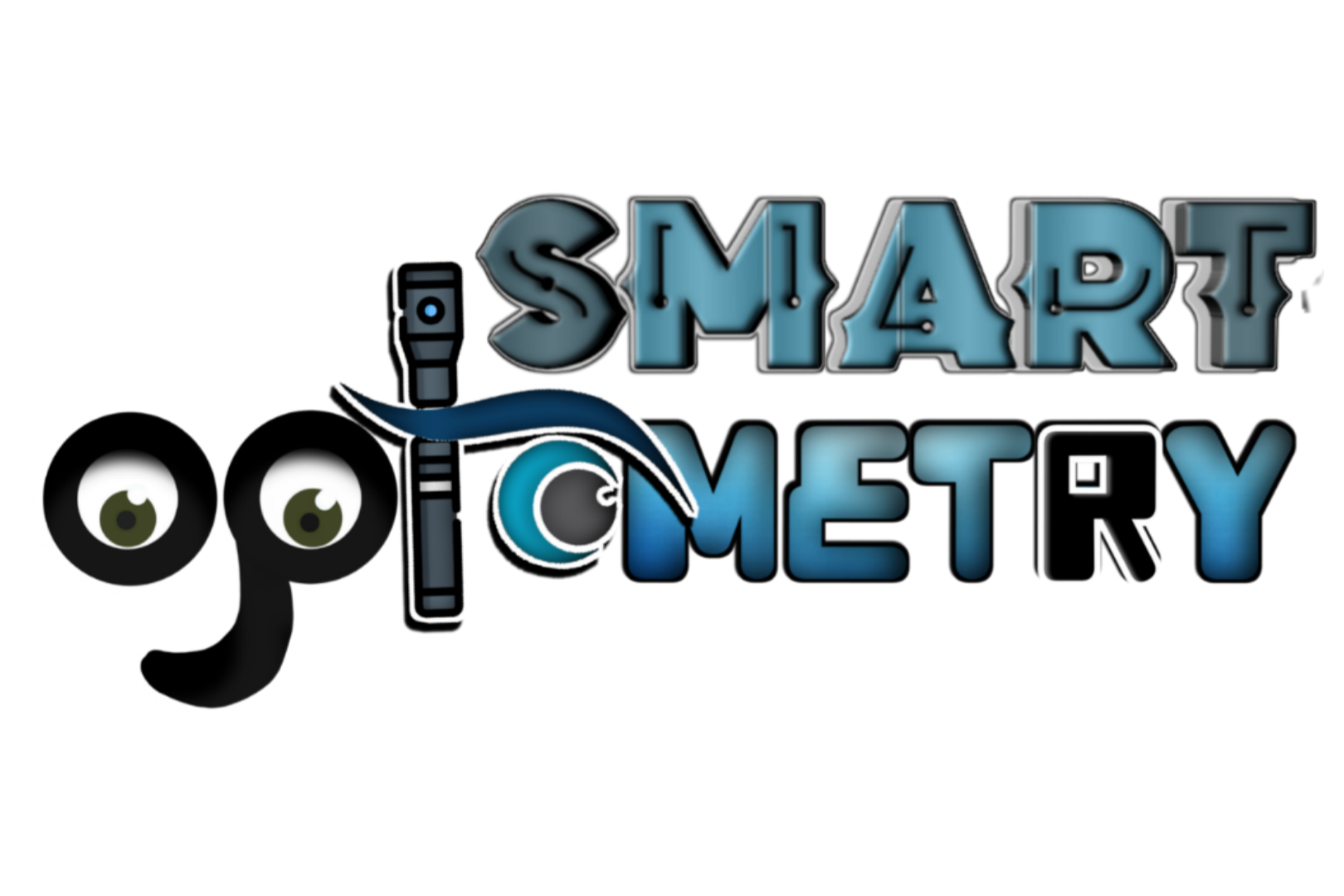
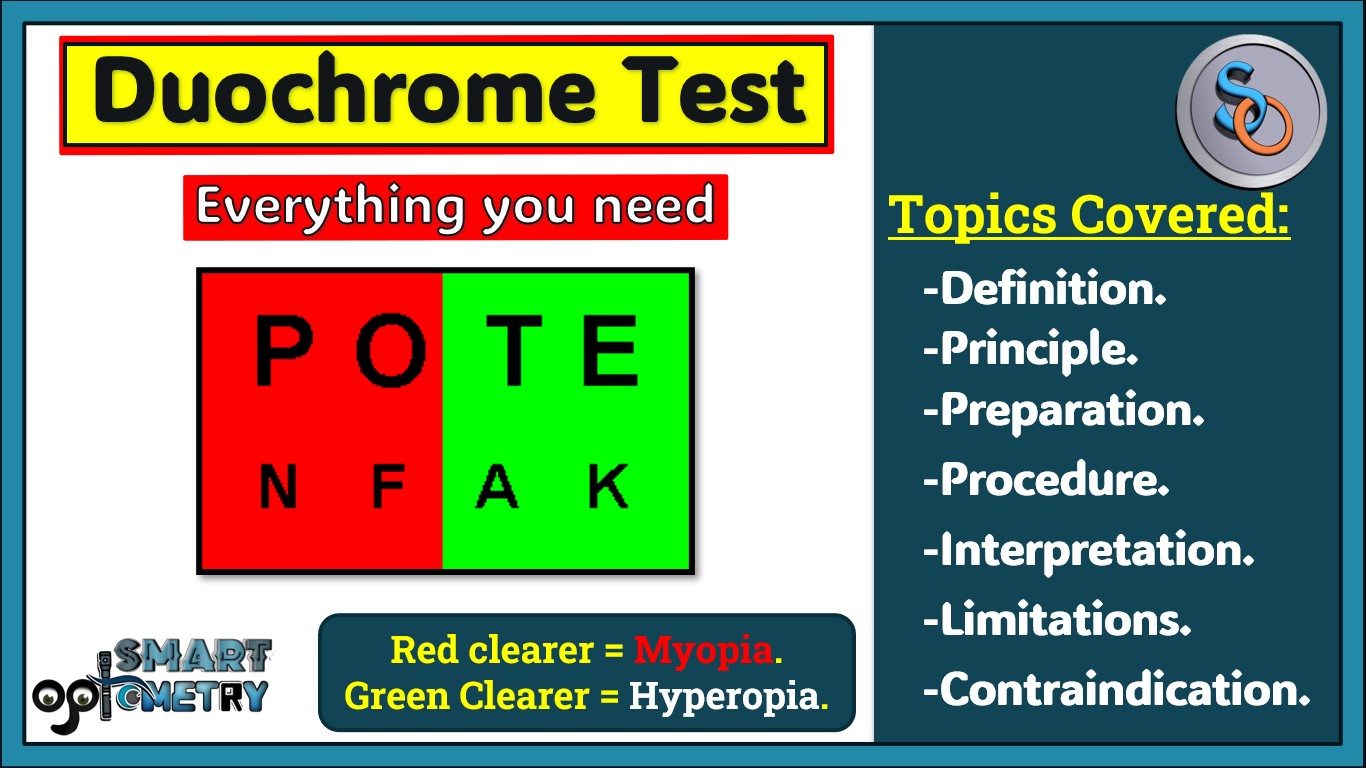


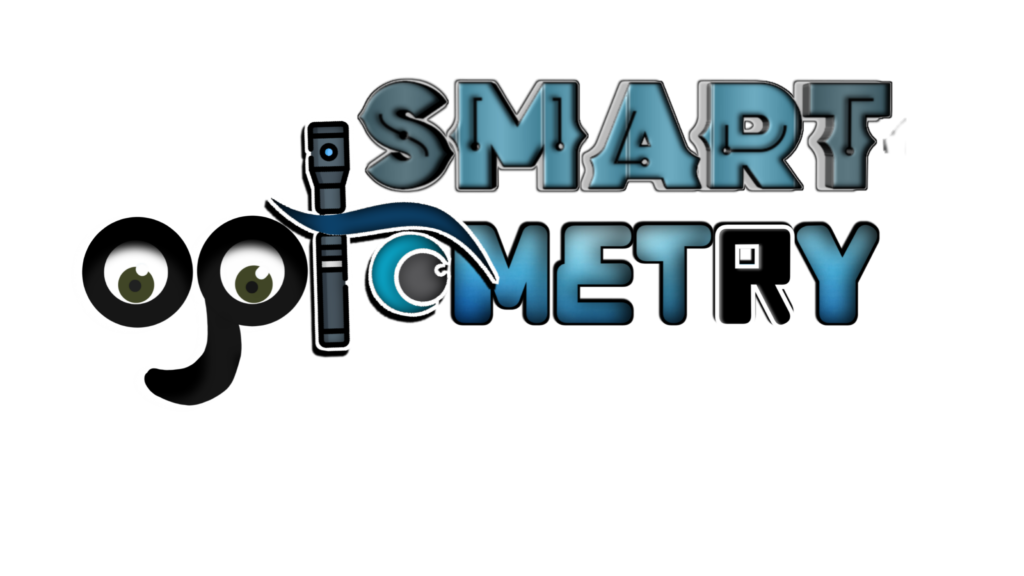
2 Comments
Stay with “Smart Optometry Academy” for more Topics.
You’ve really enlighten me on Duochrome. Thanks very much.